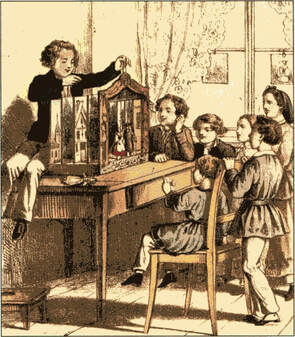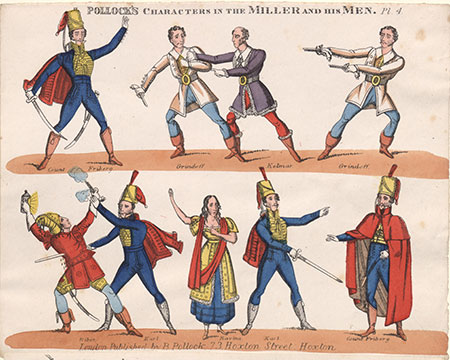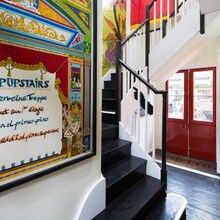|
This entertainment appeared in the early 1800s, coinciding with the popularity of theatre and the rise of the print trade. A mini theatre was used to entertain small groups of children in the early 19th and early to mid 20th century and largely attracted boys. Mini theatres became fashionable all over Europe and their tiny elaborate sets mimicked the grand theatres of London, Paris and other world stages. The sets remained popular throughout the 19th century and into the early 20th century, offering children an opportunity to exercise their imaginations and their acting chops. New plays were published in the first half of the 19th century. Information from: janeaustensworld.com/2012/03/18/toy-theatres-19th-century-entertainment/ |
This one was in a pretty sad state when I received it from a friend. It now has a new proscenium, curtains and there is a new orchestra but not yet attached, metal sliders have been straightened and sandpapered to remove rust, trusses holding the background scenery are secured.
Characters for the stories are painted onto sheets of paper, which have to be cut out, pasted onto a thin cardboard with names and plate number written on the back and pressed until dry. Note that mini theatres are operated from behind so it's necessary to be able to see the characters and the order of the plates.
Whenever I have the opportunity to go to London, one of my favourite places to visit is Pollock's Toy Shop; up a narrow staircase to a world of toys and of course mini theatres and accessories.
History of the shop and mini theatres generally can be found here: Pollocks Toy Museum









